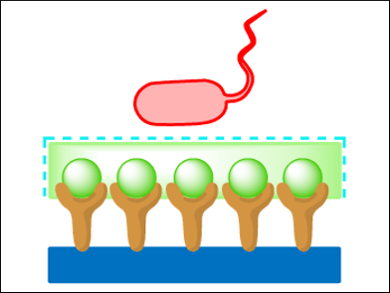Multivalent interactions play key roles in nature. The presence of multiple copies of ligands and receptors interacting monovalently with low affinity can lead to multivalent interactions, which have enhanced affinity and selectivity. This is the way carbohydrates and lectins mediate major biological processes, including pathogen infection. Dendrimers are excellent tools to study the mechanisms controlling these complex interactions due to their precise size and number of peripheral groups.
Eduardo Fernandez-Megia and colleagues, Center for Research in Biological Chemistry and Molecular Materials (CIQUS), University of Santiago de Compostela, Spain, have revealed the dynamic binding heterogeneity of this interaction as a function of the dendrimer generation and lectin cluster density by using surface plasmon resonance (SPR) with bound lectins and glycosylated dendrimers in solution.
With the goal of exploring the pathogen-inhibitory activity of large glycoconjugates by “steric stabilization”, the team studied the interaction of lectins with glycosylated polyethylene glycol (PEG)-dendritic block copolymers by SPR and isothermal titration calorimetry (ITC). The results reveal potentially opposed contributions of PEG in reducing the affinity by “steric hindrance” and the necessity of biological competitive experiments to fully assess the antiadhesive properties.
- The Effect of PEGylation on Multivalent Binding: A SPR and ITC Study with Structurally Diverse PEG-Dendritic GATG Copolymers,
Marcos Fernandez-Villamarin, Ana Sousa-Herves, Juan Correa, Eva Maria Munoz, Pablo Taboada, Ricardo Riguera, Eduardo Fernandez-Megia,
ChemNanoMat 2016.
DOI: 10.1002/cnma.201600008This article is part of a special issue on nanobiointerfaces in ChemNanoMat.




